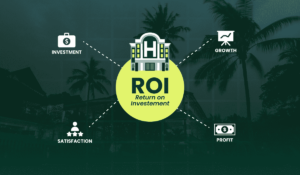As an entrepreneur, one of the biggest challenges you will face is funding your startup. Whether you are in the idea stage or have already started building your product, you will need money to bring your vision to life.
Two common options for startup funding in India are bootstrapping and venture capital (VC). In this post, we will explore the pros and cons of each option and help you decide which one is right for your startup.
What is Bootstrapping?
Bootstrapping refers to the process of starting a business with little or no external funding. Instead of seeking startup business funding from investors or banks, bootstrapping involves using your own savings, revenue from customers, or profits from the business to finance your operations.
Pros of Bootstrapping:
You Retain Full Control: One of the biggest advantages of bootstrapping is that you retain full control of your business. You do not have to answer to investors, and you can make decisions based on what is best for the long-term success of your company.
No Debt or Equity: Bootstrapping means that you are not taking on debt or giving away equity in your company. This can be particularly appealing if you are not comfortable with the idea of owing money to someone else or giving up a portion of your company’s ownership.
Resourcefulness: Bootstrapping forces you to be resourceful. You will learn to be more frugal, make smarter decisions, and find creative solutions to problems.
Cons of Bootstrapping:
Limited Resources: When you are bootstrapping, you are limited by the amount of money you have available. This can make it difficult to scale your business quickly or invest in new opportunities.
Slow Growth: Without external funding, your growth may be slower than it would be with the support of investors.
Risk: Bootstrapping is a high-risk strategy. If your business does not generate enough revenue to sustain itself, you may need to shut it down.
What is Venture Capital?
Venture capital is a type of financing provided to startups by investors who believe in the potential of the business. In exchange for their investment, VCs typically receive equity in the company.
Pros of Venture Capital:
Access to Funding: Venture capital can provide startups with the funding they need to accelerate their growth, develop new products, and expand into new markets.
Industry Expertise: VCs often have expertise in the industry or market that your business operates in. This can be invaluable in helping you make strategic decisions and avoid common pitfalls.
Network: VCs often have extensive networks that they can introduce you to. This can include potential customers, partners, and other investors.
Cons of Venture Capital:
Loss of Control: When you take on venture capital, you are giving up a portion of your ownership in the company. This means that you will have to share control of your business with your investors.
Pressure to Perform: VCs invest in startups with the expectation of seeing a return on their investment. This means that they will often put pressure on you to meet aggressive growth targets and achieve profitability quickly.
Dilution: With each round of funding, you will be diluting your ownership in the company. This can result in you owning a smaller and smaller percentage of the business over time.
Which Funding Option is Right for Your Startup?

Deciding whether to bootstrap or seek venture capital funding depends on your business’s unique circumstances. Here are some factors to consider when making your decision:
Your Goals: If your goal is to build a lifestyle business that generates enough revenue to support yourself and your family, then bootstrapping may be the best option. If you have ambitions of building a high-growth company that requires significant investment to scale quickly, then venture capital may be the better choice.
Your Industry: Some industries require more upfront investment than others. For example, if you are building a biotech startup, you may need millions of dollars in funding to develop your product and get regulatory approval. On the other hand, if you are building a software company, you may be able to get by with less funding.
Your Network: If you have a strong network of potential customers, partners, and investors, you may be able to bootstrap your business more easily. If you are just starting out and do not have a strong network, venture capital may be the better choice as it can provide you with access to those resources.
Your Risk Tolerance: Bootstrapping is a high-risk strategy, but it can also be very rewarding. If you are comfortable taking on more risk and have a high tolerance for uncertainty, bootstrapping may be a good option for you. If you prefer a more predictable path, venture capital may be a better fit.
Bootstrapping Strategies:
Cut Costs and Maximize Profits: When you are bootstrapping, it is essential to minimize your expenses and maximize your profits. This means finding ways to save money on everything from office space to employee salaries. Look for cost-effective alternatives and focus on generating revenue as quickly as possible.
Leverage Your Network: Your network can be a powerful asset when you are bootstrapping. Reach out to friends, family, and colleagues for support and advice. Attend networking events and conferences to meet potential customers and partners. Use social media and other online platforms to build your brand and attract customers.
Look for Alternative Funding Sources: Bootstrapping does not mean that you cannot seek outside funding. Look for alternative funding sources such as crowdfunding, grants, or loans from family and friends. These can provide you with the capital you need to get your business off the ground without giving up equity.
Venture Capital Strategies:
Build a Strong Pitch Deck: Your pitch deck is the first thing that investors will see, so it is essential to make it as strong as possible. Focus on your unique value proposition, market opportunity, and growth potential. Use data and metrics to support your claims, and make sure your pitch is concise and compelling.
Research Potential Investors: Before you pitch to investors, do your research. Ensure you are targeting investors who have experience in your industry and are a good fit for your business. Look at their investment portfolio and track record to see if they have a history of investing in companies like yours.
Develop a Growth Plan: Investors want to see that you have a plan for growing your business. Develop a clear growth plan that outlines your strategies for acquiring customers, expanding into new markets, and generating revenue. Use data and metrics to support your claims and make sure your plan is realistic and achievable.
Conclusion:
Bootstrapping and venture capital are two common options for funding for idea-stage startups. Bootstrapping can provide you with control and independence, but it requires you to be resourceful and accept a higher level of risk.
Venture capital can provide you with the funding and resources you need to scale quickly, but it requires you to give up a portion of your ownership and control. Ultimately, the best option for your startup depends on your goals, industry, network, and risk tolerance. Consider all your options carefully before making your final decision.





Be First to Comment